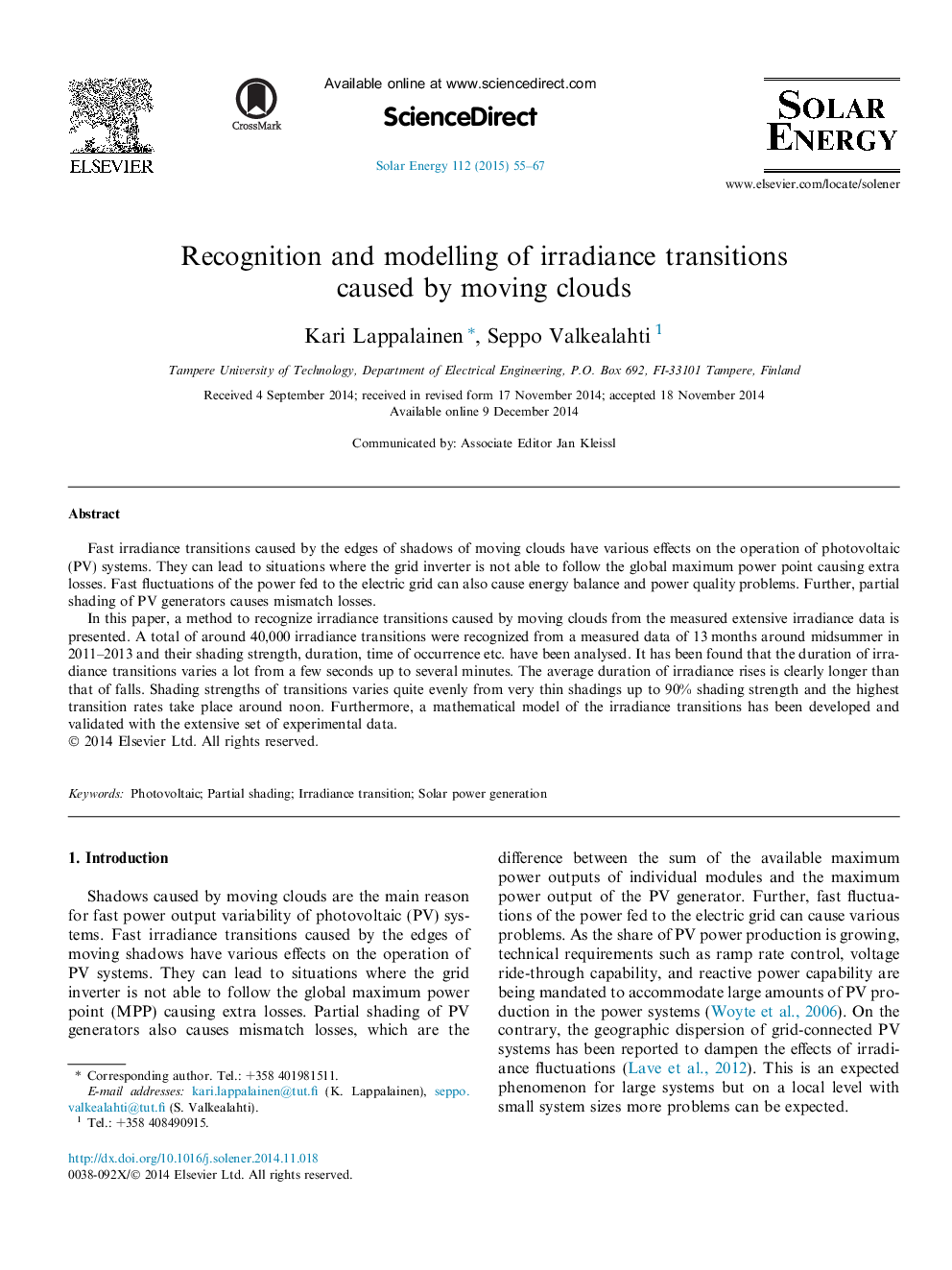| Article ID | Journal | Published Year | Pages | File Type |
|---|---|---|---|---|
| 1549748 | Solar Energy | 2015 | 13 Pages |
Abstract
In this paper, a method to recognize irradiance transitions caused by moving clouds from the measured extensive irradiance data is presented. A total of around 40,000 irradiance transitions were recognized from a measured data of 13Â months around midsummer in 2011-2013 and their shading strength, duration, time of occurrence etc. have been analysed. It has been found that the duration of irradiance transitions varies a lot from a few seconds up to several minutes. The average duration of irradiance rises is clearly longer than that of falls. Shading strengths of transitions varies quite evenly from very thin shadings up to 90% shading strength and the highest transition rates take place around noon. Furthermore, a mathematical model of the irradiance transitions has been developed and validated with the extensive set of experimental data.
Related Topics
Physical Sciences and Engineering
Energy
Renewable Energy, Sustainability and the Environment
Authors
Kari Lappalainen, Seppo Valkealahti,
